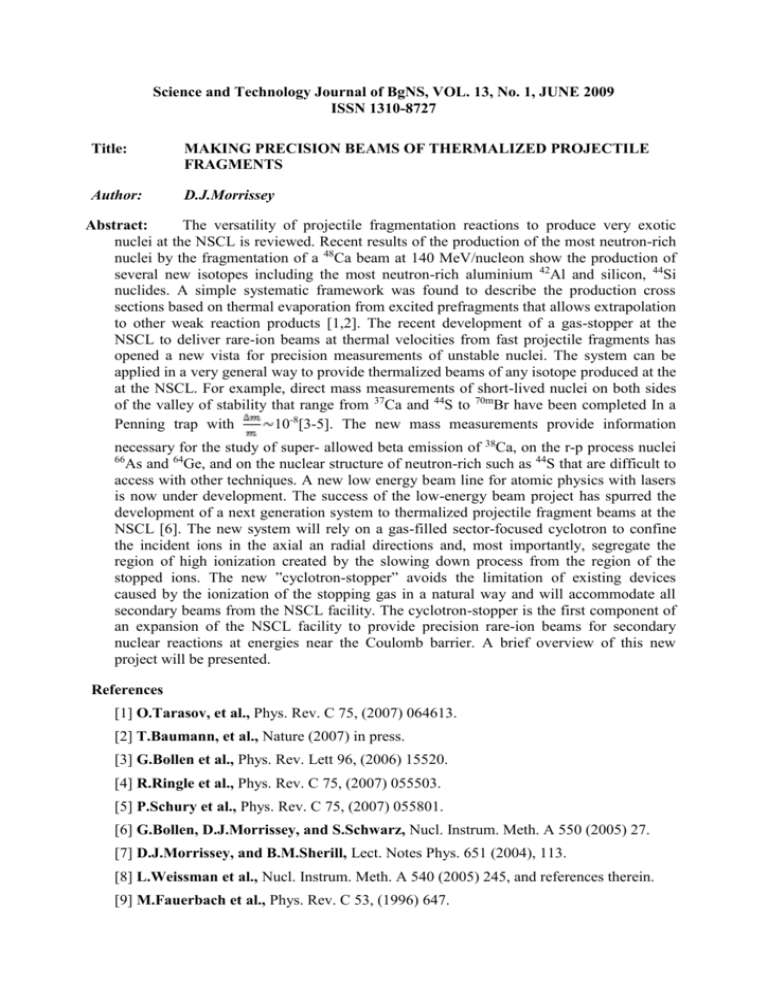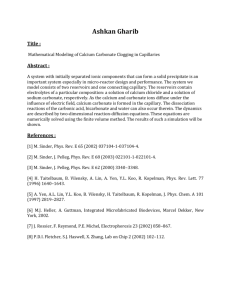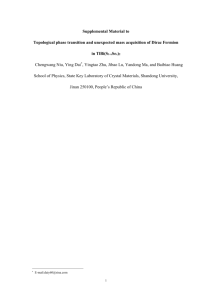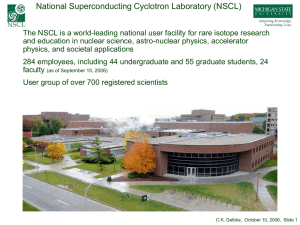Science and Technology Journal of BgNS, VOL. 13, No. 1, JUNE
advertisement

Science and Technology Journal of BgNS, VOL. 13, No. 1, JUNE 2009 ISSN 1310-8727 Title: MAKING PRECISION BEAMS OF THERMALIZED PROJECTILE FRAGMENTS Author: D.J.Morrissey Abstract: The versatility of projectile fragmentation reactions to produce very exotic nuclei at the NSCL is reviewed. Recent results of the production of the most neutron-rich nuclei by the fragmentation of a 48Ca beam at 140 MeV/nucleon show the production of several new isotopes including the most neutron-rich aluminium 42Al and silicon, 44Si nuclides. A simple systematic framework was found to describe the production cross sections based on thermal evaporation from excited prefragments that allows extrapolation to other weak reaction products [1,2]. The recent development of a gas-stopper at the NSCL to deliver rare-ion beams at thermal velocities from fast projectile fragments has opened a new vista for precision measurements of unstable nuclei. The system can be applied in a very general way to provide thermalized beams of any isotope produced at the at the NSCL. For example, direct mass measurements of short-lived nuclei on both sides of the valley of stability that range from 37Ca and 44S to 70mBr have been completed In a Penning trap with 10-8[3-5]. The new mass measurements provide information necessary for the study of super- allowed beta emission of 38Ca, on the r-p process nuclei 66 As and 64Ge, and on the nuclear structure of neutron-rich such as 44S that are difficult to access with other techniques. A new low energy beam line for atomic physics with lasers is now under development. The success of the low-energy beam project has spurred the development of a next generation system to thermalized projectile fragment beams at the NSCL [6]. The new system will rely on a gas-filled sector-focused cyclotron to confine the incident ions in the axial an radial directions and, most importantly, segregate the region of high ionization created by the slowing down process from the region of the stopped ions. The new ”cyclotron-stopper” avoids the limitation of existing devices caused by the ionization of the stopping gas in a natural way and will accommodate all secondary beams from the NSCL facility. The cyclotron-stopper is the first component of an expansion of the NSCL facility to provide precision rare-ion beams for secondary nuclear reactions at energies near the Coulomb barrier. A brief overview of this new project will be presented. References [1] O.Tarasov, et al., Phys. Rev. C 75, (2007) 064613. [2] T.Baumann, et al., Nature (2007) in press. [3] G.Bollen et al., Phys. Rev. Lett 96, (2006) 15520. [4] R.Ringle et al., Phys. Rev. C 75, (2007) 055503. [5] P.Schury et al., Phys. Rev. C 75, (2007) 055801. [6] G.Bollen, D.J.Morrissey, and S.Schwarz, Nucl. Instrum. Meth. A 550 (2005) 27. [7] D.J.Morrissey, and B.M.Sherill, Lect. Notes Phys. 651 (2004), 113. [8] L.Weissman et al., Nucl. Instrum. Meth. A 540 (2005) 245, and references therein. [9] M.Fauerbach et al., Phys. Rev. C 53, (1996) 647. [10] O.Tarasov, et al., Phys. Lett. B 409 (1997) 64. [11] H.Sukari, et al., Phys. Lett. B 448 (1999) 180. [12] E.Kwan, et al., Amer. Instr Phys. Conf. Proc. 884 (2007) 213, and references therein. [13] G.Souliotis, et al., Phys. Rev. C 46 (1992) 1383. [14] R.Pfaff, et al., Phys. Rev. C 51, (1995) 1348. [15] M.Mocho, et al., Phys. Rev. C 74, (2006) 054612. [16] P.Moeller, et al., At. Data Nucl. Data Tables 59 (1995) 185. [17] M.Samyn, et al., Phys. Rev. C 70, (2004) 044309. [18] M.Notani, et al., Phys. Lett. B 542 (2002) 49. [19] K.Suemmerer and B.Blank, Phys. Rev. C 61, (2000) 034607. [20] R.Charity, Phys. Rev. C 58, (1998) 1073. [21] S.Schwarz, et al., Nucl. Instrum. Meth. B 204 (2003) 507. [22] M.Wada, et al., Nucl. Instrum. Meth. B 204 (2003) 570.



